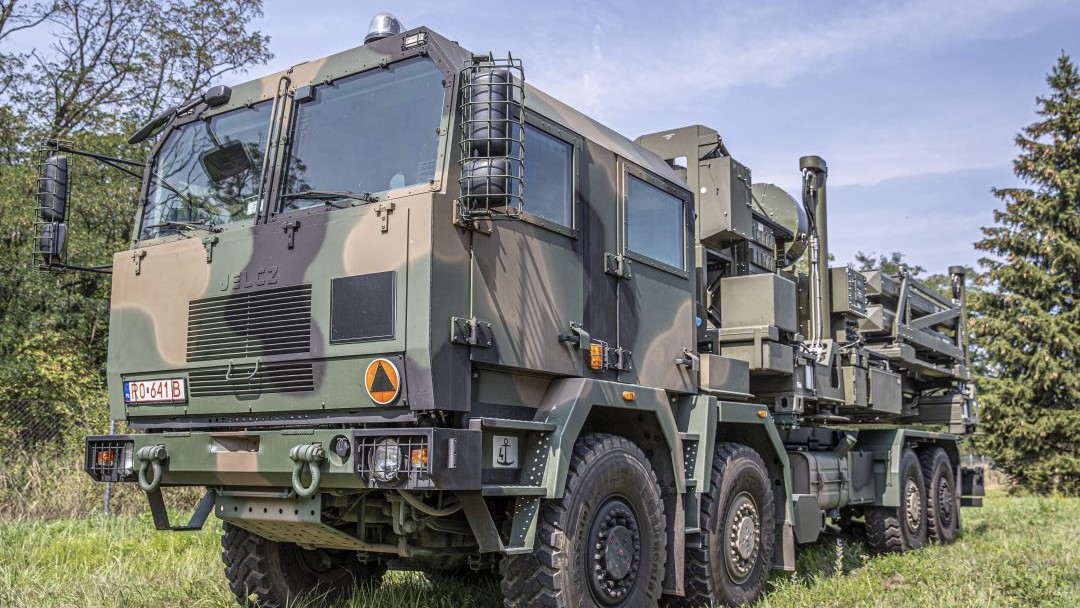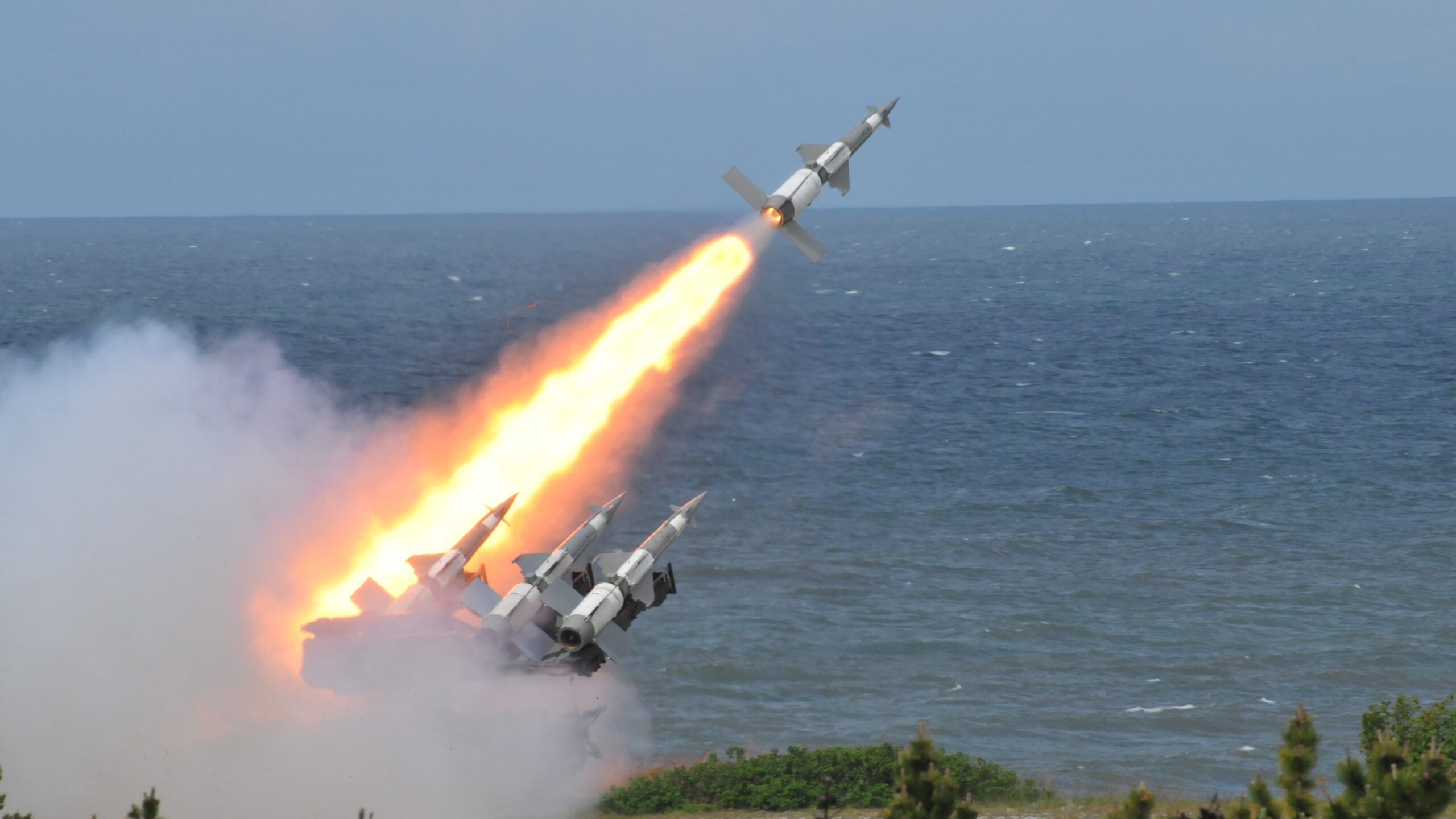
Design for part of the Narew SHORAD system from Poland. (PGZ)
WARSAW: When British giant MBDA and the PGZ-Narew consortium signed a late April agreement to work together on Poland’s homegrown Narew short-range air defense system, it was a major moment for a domestic Polish defense industry that can feel looked down upon by the Western powers.
But it also highlighted the simple fact that, after two and a half months of war in Ukraine, one of the biggest lessons is that SHORAD capabilities might be the difference between life and death — and Poland is paying attention.
The war between Russia and Ukraine “proved and underlined SHORAD and [air defense] capabilities have a great importance,” Tomasz Smura, Director of the Research Office of the Casimir Pulaski Foundation, told Breaking Defense. “Both countries have air defense sufficient to discourage the opponent to conduct air operations. Russians were not able to suppress Ukrainian air defense, what was best shown during a failed helicopter assault in the first days of war.”
Mariusz Błaszczak, Poland’s Minister of National Defense, didn’t beat about the bush when discussing the need for Narew to get up and running as quickly as possible.
“We draw conclusions from what is happening beyond our eastern border,” Błaszczak said in a statement during a press conference approving the contract for the supply of SHORAD elements under the Narew program. “We can see how important the air and anti-aircraft defense capability is. Hence, we have significantly accelerated the deliveries of the Narew system to equip the Polish Army.”
In fact, Błaszczak emphasized in “September this year the first fire unit of the Narew system will be used by the Polish army, and the second at the turn of the year,” an accelerated timetable from previous announcements.
The Narew system will be used primarily to engage multi-role aircraft, cruise missiles and UAVs operating on low altitudes, in order to protect Polish Armed Forces units, facilities and air bases. It will work as a compliment to the Wisła medium range air defense and anti-ballistic missile system — the Polish name for the American-made Patriot system whose delivery is planned to start this year.
Together the two systems are designed to create a national, all-weather, day and night protective net over Poland., integrated via US-manufactured Integrated Air and Missile Defense Battle Command System (IBCS). First demonstration of the integrated air defense systems is planned for 2026, and the government both systems will cost Polish taxpayers 80-100 billion zlotys ($18 to $22.5 billion).
Getting the integration taken care of is vital, as Ukraine also showed that SHORAD alone won’t protect the population of an invaded nation.
The Ukrainians “also suffer from lack of modern AD systems, capable of defeating Russian ballistic and cruise missiles used to destroy selected elements of military infrastructure and personnel. If Ukraine [had] modern air defense systems, a lot of civilian [casualties] in major cities could be avoided” Smura said.
The April 21 agreement means MBDA will provide its CAMM missiles for use on Narew, which is the most complex and largest contract in the history of the Polish Armed Forces. That missile is used on the UK Sky Sabre systems currently deployed in Poland to help protect its airspace.
According to the agreement, the first two Narew batteries will be delivered to the Polish Armed Forces – the first one by September 2022, and the second one around the turn into 2023 – as a gap-filling solution. Both units will be composed of elements from Poland (one redeployable multi-mission “Soła” 3D radar, fire control station, and three loader vehicles) as well as the UK (three vehicles based on the Jelcz 8×8 platform with iLauncher as well as number of Common Anti-Air Modular Missiles.)
Narew will be very first Western-manufactured AD system in Polish Armed Forces, and will consist of 23 SHORAD missile batteries. The contract includes the acquisition of a training and logistics package and support for the operation of military equipment is provided. Also signed as part of the deal is an agreement for three Miecznik-class frigates to be equipped with the naval variant of the Common Anti-Air Modular Missile, so it is possible the CAMM will be manufactured in Poland.
“That contract allows us to confirm the further schedule of integration work, the progress in which will determine how quickly we will be able to strengthen our country’s air defense. The signed document is also another step towards concluding a strategic agreement with our British partner in the production of launchers and missiles at our plants, that is crucial for the success of the entire Narew program” Sebastian Chwałek, President of the Management Board of PGZ, said in a statement.
Chris Allam, Managing Director of MBDA UK, added that “MBDA is proud to be part of such an important program for the protection of Polish skies together with our Polish partners from PGZ. […] We are already working to rapidly deliver the first systems to Poland as well as addressing the wider Narew program of technology transfer and Polish manufacture.”
Air Defense: A Regional Trend
The Narew system is going to replace the now-completely obsolete 2K12 Kub (SA-6 Gainful) mobile surface-to-air missile system and 9K33 Osa (SA-8 Gecko) mobile, low-altitude, short-range tactical surface-to-air missile system in the Polish Army as well as the Newa SC (SA-3 Goa) surface-to-air missile system used by the Polish Air Force.
Both the SA-6 and SA-8 systems are also in stocks of the other countries in the region, including Bulgaria, Romania, and Slovakia. And while Poland’s development of Narew fits into the broader regional desire for air defense options, Warsaw was actually somewhat behind the game in pushing for modernized air defenses.
“Many countries of the CEE and Baltic regions decided to increase defense spending and some of them, like Bulgaria, Estonia or Latvia, could spend money for acquiring new SHORAD systems to replace obsolete ex-Soviet systems or to improve air defense capabilities. First of them would be Slovakia, which has donated one battery of the S-300 air defense system to Ukraine, based on its request to help in self-defense due to armed aggression from the Russian Federation. And I think that market will grow,” Smura predicted.

Poland’s Newa-SC system. (Polish MoD)
Lithuania’s Ministry of National Defence and Norway’s Kongsberg signed a contract for procuring the NASAMS mid-range air defense system for the Lithuanian Air Force in October 2017. The €110 million ($116 million) package covers equipment for two air defense batteries and logistical maintenance package, as well as training for operators and maintenance personnel of the system was provided. Vilnius received two NASAMS-3 batteries in October 2020. The procurement has been coupled with upgrading the Saab RBS-70 short-range air defense systems in possession of the Lithuanian Armed Forces – the two systems will be integrated into the overall Lithuanian air defense shield.
The Czech government announced on September 2021 that it has signed an agreement to purchase four batteries of Israeli Spyder-MR short and medium range mobile air defense systems, developed by Rafael Advanced Defense Systems with assistance from Israel Aerospace Industries (IAI), in a deal worth $627 million. Delivery of the systems was scheduled to be completed by 2026. Spyder-MR will replace ageing SA-6s, in use by the Czech Army since the 1970s and the Czech’s are expected to operate the supplied systems for at least 20 years. Combined with spending for maintenance and repairs, the acquisition would cost the country about $1 billion, according to a government statement.
In November 2020, the contract for the procurement of the NASAMS-3 system for the Hungarian Armed Forces was signed, as a replacement the SA-6. The value of the procurement was EUR 410 million. The first units of NASAMS will arrive in Hungary in 2023, while the system will be complete by 2025. The first fire unit should be operational by the end of 2024. Earlier, in August 2020, Hungary ordered 120 AIM-120C7 AMRAAMs and 60 AMRAAM-ER missiles. The AIM-120C7 missiles will also be used by Hungarian Air Force Gripen multi-role fighters, while AMRAAM-ER missiles will only provide the longer-range armament of the NASAMS-3 system.
Given the Ukraine situation and a push across NATO for more integrated air defenses, Narew could find a market if it is proven to be a successful, fairly inexpensive option.
“Maybe other countries in region would be interested in purchase of Narew, and integration of Poland and Baltic countries air defense would be very meaningful, both from operational and logistic sustainment point of view as well as will strengthen regional air defense capabilities, industrial sovereignty, know-how and collaboration between nations,” Smura stressed.
But right now, “I don’t think Polish defense industry will be capable to manufacture Narew for export customers in short term — producing all elements for 23 batteries for Polish Armed Forces would last a decade. And export of SHORAD systems would require huge support from the government in Warsaw. I think more likely will be export of CAMM manufactured in Poland,” he added.
Iran says it shot down Israel’s attack. Here’s what air defense systems it might have used.
Tehran has been increasingly public about its air defense capabilities, including showing off models of systems at a recent international defense expo.


























